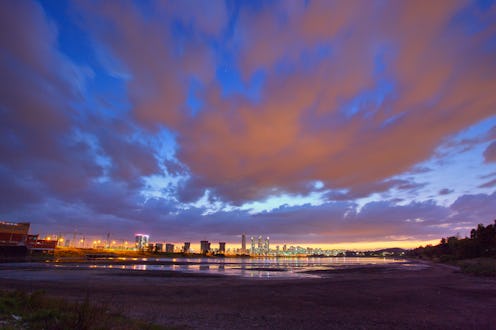Life
This Is Exactly When Days Start Getting Shorter In The Fall

The Halloween costumes have been put away, the trick-or-treat candy has all been eaten (what, is that just me?), and stores have started swapping out autumnal wreaths for tree decorations and snowflake-printed throw pillows. We're preparing to transition to the end of Daylight Saving Time — hooray for an extra hour of sleep on Nov. 5! — and in many parts of the country, people have already started breaking out the hats and mittens. But if there's one thing that really drives home the fact that winter is upon us, it's the feeling of leaving the office as early as 5 p.m. to find that the sun has already set. So when do days start getting shorter in 2017? I know you need to start preparing mentally.
You might actually be relieved to find out that this process has already started! The autumn equinox is the point at which the days officially start to shorten, and guess what? The equinox is already behind us! The days have been growing increasingly shorter since Sept. 22, when the daytime and nighttime were basically evenly split. Since then, there's been more darkness than light within any 24-hour window. You've already started experiencing this all-too-depressing transition!
The shorter days are definitely going to start feeling more obvious now, though, partially because every day actually is shorter than the one before and partially because of Daylight Saving Time. With one less hour of sunlight, the shorter days are a lot more pronounced — and also a lot more depressing. Even though the days have technically been shrinking since mid-September, you might actually feel like the transitions starts right along with the end of Daylight Saving Time on Nov. 5. So you might only now be feeling the effects.
The good news is that now that you're more aware of the shorter windows of daylight, you're also getting pretty close to the winter solstice, which will start to reverse the process entirely. In 2017, the winter solstice — also known as the shortest day of the year and the first day of winter — will take place on Dec. 21. On this day, the sun will travel the shortest path through the sky, causing the least daylight and the longest night that we'll experience all year within a 24-hour period. With the solstice behind us, we'll begin experiencing longer days. Every day, we'll see a little more sunlight — at least until the spring equinox, when a new cycle begins entirely.
I know it's a bummer to adapt to these shorter days, so consider the rich history of the winter solstice. This special day in December marks the "turning of the sun," and since cultures across time and geography have hated early nightfall just as much as me and you, it's been cause for celebration for hundreds of years. Some believe that Dec. 25 was selected as the date to celebrate Christmas to offset Pagan traditions while rejoicing in the "true light of the world." Scandanavian cultures observe the Feast of Juul festival at the time of the winter solstice. Today, winter solstice celebrations range from annual days of forgiveness to ritual baths to major festivals. Just like you, the world can't wait for this whole theme of shorter days to be over. You can take a cue from any of these celebrations and throw a serious party when daylight starts sticking around just a little longer.
Take heart, friends. The short days won't last forever. You're partially through the woods as it is, and when you're out of them entirely — just wait for all that sunlight!
Images: pkk001 / Imazins/ImaZinS/Getty Images; Giphy